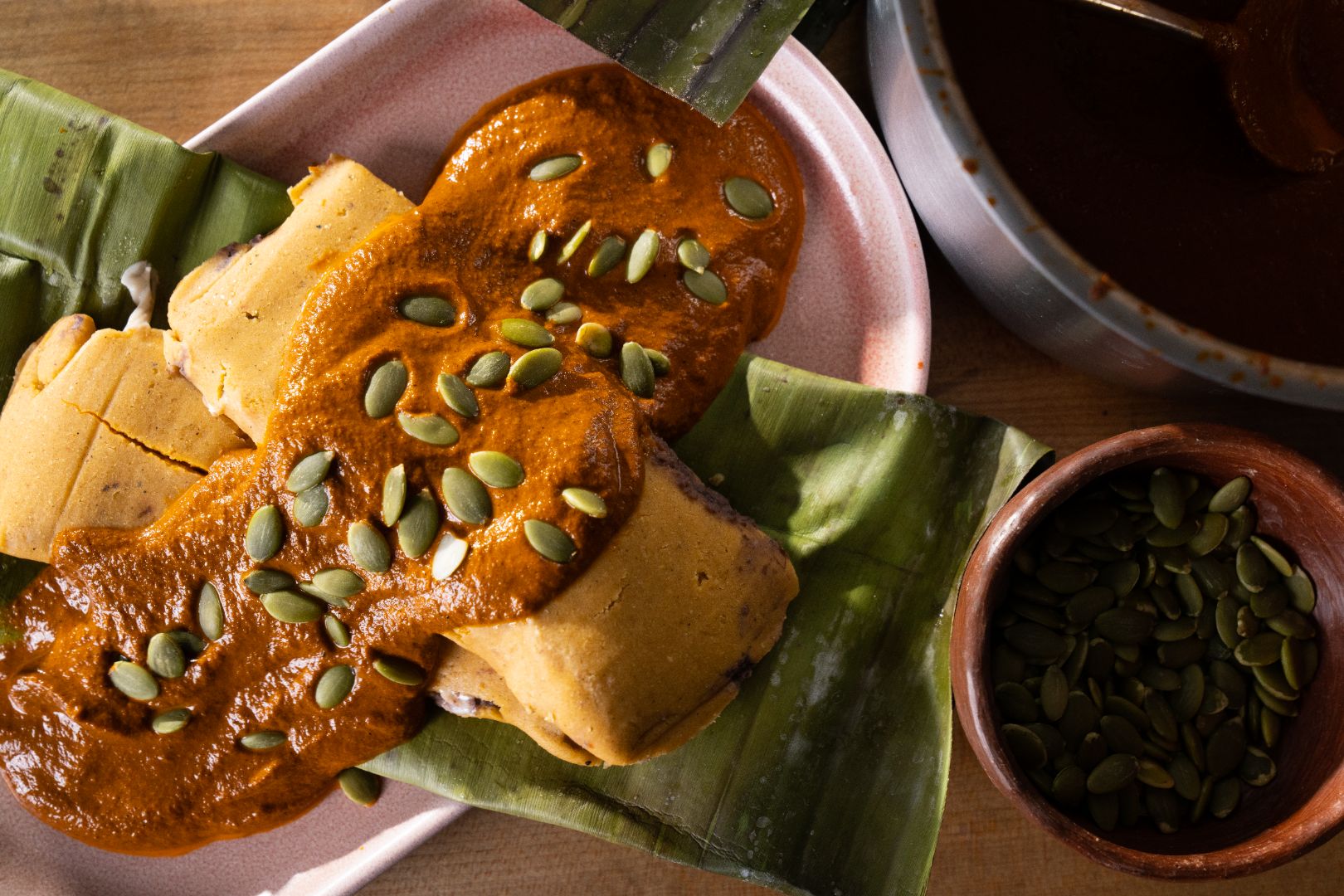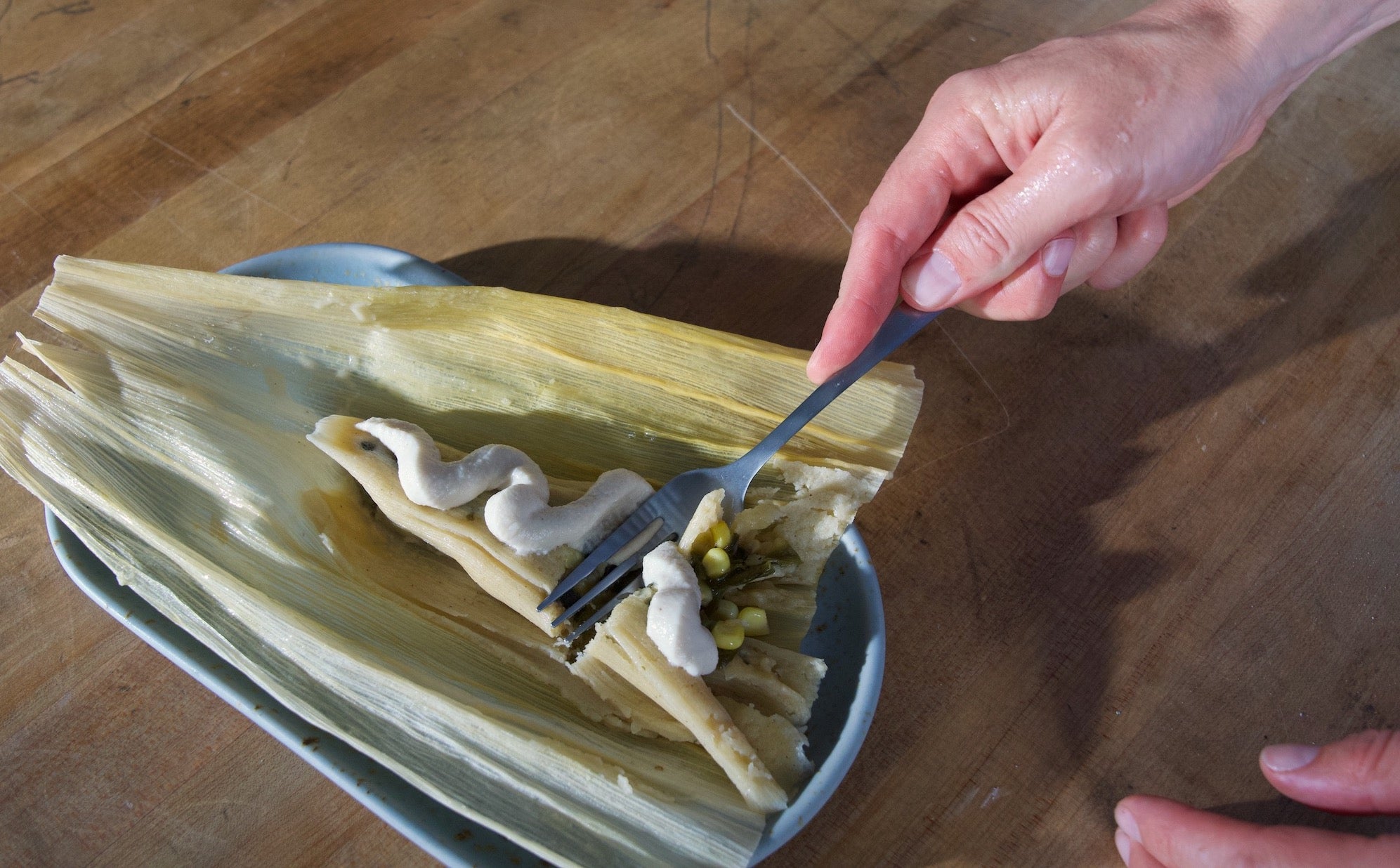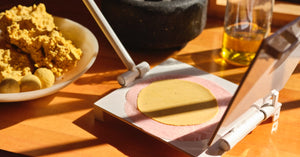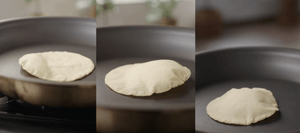Tools & Tips for Making Tamales from Masa Harina
Tools & Tips for Making Tamales from Masa Harina

November 21, 2024
Making tamales can feel like an undertaking — the good kind, and the kind that gets easier year after year. But if you're just starting out or your tamalada tradition could simply benefit from a bit of a refresh, read on.
Tools & Gear
You'll need a few special cookware items for maximum efficiency.- Large Stand Mixer: A stand mixer will help you achieve a fluffy texture in your finished tamales by introducing as much air into the dough as possible by whipping your fat. It can be done with a hand-mixer (or by hand, in a bowl) but it's a more, well, hands-on process.
- Tamalera aka Tamal Steamer Pot: A large 20-quart tamal steamer or a tall pasta pot with a steamer basket and tight fitting lid indispensable. You'll need enough space for all of your tamales, so make sure yours has significant capacity — or be prepared to use two pots.
- Masa Spreaders: Get creative here. You can use spoons, bench scrapers, (clean!) drywall knives or anything really that has a nice flat edge that lends itself to spreading masa.
Ingredients
- Masa Harina: We're obviously partial to Masienda's. You can use any of our four colors of masa; we like to create some contrast between the dough and the filling (think yellow masa and puerco rojo, or blue masa with quesillo and black beans).
- Fat: Lard is traditional (we love Porter Road's pasture-raised Rendered Pork Fat), but you can also use duck fat, butter (best for sweet tamales), or even coconut oil for a vegan option — just be sure to choose refined if you don't want the flavor of coconut to come through).
- Liquid: If you're poaching meat for the filling, don't throw that cooking liquid out! Use it in place of stock to hydrate your masa. Storebought or homemade bone broth or vegetable stock work great, or milk for sweet tamales.
- Fillings: Whether you spend all day braising beef or pork, or shred that leftover roast chicken and simmer it in a quick salsa verde, the filling is your chance to get really creative.
- Corn Husks or Banana Leaves: A Mexican market is typically your best bet. Make sure to buy more than the number of tamales you plan to make, to account for any broken leaves.
Cooking Tips
Plan Ahead
Tamales are not typically a weeknight cooking project — unless you have
lots of helpers or plan on staying up late! Consider dividing up the project into two days. On day one, make a filling (or two). On day two, make your masa and then assemble and cook your tamales.
Season Your Filling
Tamal fillings are no place to skimp on salt — they should be well-seasoned
so you can taste their distinct flavors against the masa.
Whip It Good
Be sure to whip your fat (traditionally lard) until it's light and airy, almost like cake frosting, before sprinkling on the baking powder and adding your masa.
Make a Vegan Option
For plant-based tamales, swap the lard for vegan butter or coconut oil (refined if you prefer no coconut flavor), and use vegetable broth as your liquid.
Smooth Like Hummus
The texture of your masa for tamales is a personal preference, but we like it super smooth and spreadable — think hummus or cake batter.
The Penny Trick
To check your water level and avoid a scorched pot, place a penny below the steamer basket and fill with water. It should rattle while the tamales are cooking. If the sound stops, add more water.
Our Best Recipes
You can find plenty of inspiration on our blog, from the classics to contemporary takes. Here are some favorites:
Hugo Gamino's Black Bean Tamales with Mole 
Pumpkin Spice Tamales

Mariana Alvarado's Vegan Rajas con Elote with Cashew Crema
And don't miss our highly-riffable base recipe for Tamales from Masa Harina.
Do you have questions about how to make tamales from masa harina or tips based on your own experience? Please leave us a note in the comment section below!




All Comments
Instead of a bench scraper or trowel, I saw someone use the tamale press but just didn’t make it thin for a tortilla application. Then, the thicker round was flopped onto the corn husk and then filled. The sides wer then flopped over the filling and the corn husk was wrapped as usual. this will make a more uniform layer of masa for the tamale.